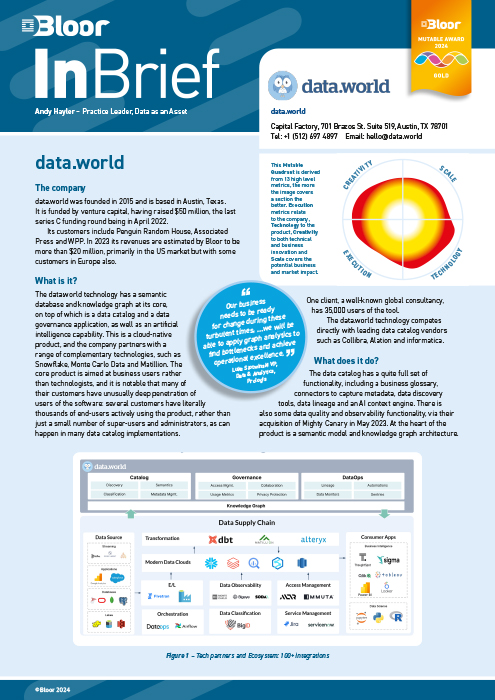data.world
Published On 17th, Sep 2024 Content Copyright ©
2024 Bloor, All Rights Reserved.
2024 Bloor, All Rights Reserved.
Classification
- InBrief
data.world has a modern data catalog with a semantic database and knowledge graph, and AI underpinnings. It constructs a shopping-like experience for end users, who can browse data assets as they might look through an on-line retail website.
Research By
Related Technologies
Related Companies
Connect with Us
Ready to Get Started
Learn how Bloor Research can support your organization’s journey toward a smarter, more secure future."
Connect with us Join Our Community


